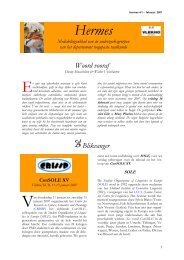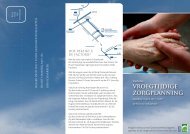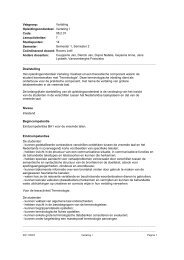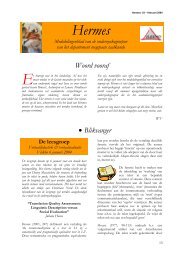HUB RESEARCH PAPER - Hogeschool-Universiteit Brussel
HUB RESEARCH PAPER - Hogeschool-Universiteit Brussel
HUB RESEARCH PAPER - Hogeschool-Universiteit Brussel
Create successful ePaper yourself
Turn your PDF publications into a flip-book with our unique Google optimized e-Paper software.
Process consultation revisited 9<br />
1998). The quality of relational practices “opens or closes possibilities, constructs exclusion or<br />
inclusion, enables reflexivity, or limits learning” (Bouwen & Hosking, 2000, p. 273). Similarly,<br />
during a joint conference of OD-practitioners and family therapists who were inquiring into the<br />
critical characteristics of a successful intervention Sheila McNamee used the expression: “there<br />
is no method, just watch the relationship”. After comparing different approaches, she concluded<br />
that the quality of the relationship between client and facilitator made the difference; not the<br />
method, context or theoretical principles. Learning and changing become possible if one keeps a<br />
sharp eye on the (here-and-now) quality of interaction and relationship (e.g., McNamee, 1998;<br />
McNamee & Gergen, 1998; Bouwen, 1998; Bouwen & Hosking, 2000).<br />
To characterize the quality of the relational practice, one can describe to what extent the<br />
following concrete and observable qualities are present: (a) reciprocity in relationship (Bouwen<br />
& Taillieu, 2004), (b) joint ‘authorship’ (Shotter, 1993, 2004) and ‘co-ownership’ (Schein,<br />
1999a, 1999b) of the task or project; (c) ‘talking with’, that is sensitive, engaged, involved,<br />
responsive interaction that ‘moves’ speakers and possibly evokes actionable knowledge (instead<br />
of monologic ‘talking about’) (Shotter, 2004, p. 205); (d) mutually open and illustrated<br />
communication, the possibility of mutual testing and contradicting allowing for double loop<br />
learning (Argyris & Schön, 1978); (e) mutually energizing conversation through joint<br />
appreciation, active engagement and the continuing possibility of being authentically present<br />
with others (Block, 2000; Dutton, 2003; Quinn & Dutton, 2005); (f) mutually appreciative<br />
inquiring (instead of focusing on problematizing) (Cooperrider, Whitney, & Stavros, 2003);<br />
(g) joint reflection on the here-and-now group interaction and relationships that are developing<br />
(McNamee, 1998; McNamee & Gergen, 1998; Bouwen, 1998; Bouwen & Hosking, 2000),







